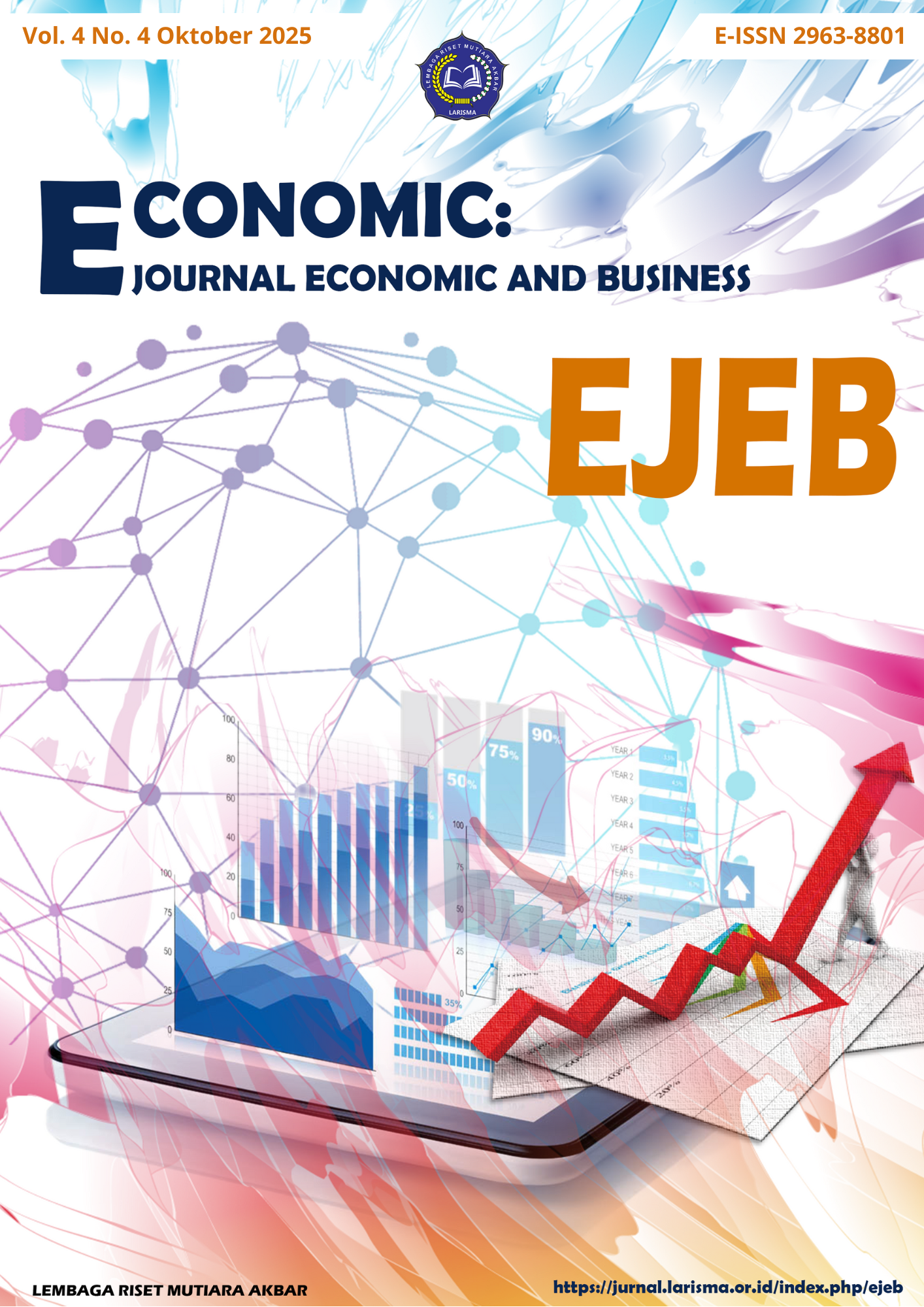Motivation and Non-Physical Environment in Improving Employee Performance
Main Article Content
Abstract
This study uses a quantitative approach to analyze the influence of the non-physical work environment and work motivation on employee performance at Rai Fitness Bali. A total of 53 employees became respondents in this study. Based on the results of the regression analysis, it is known that the non-physical work environment and work motivation have a significant effect on employee performance, both partially and simultaneously. The results of the F test indicate that both variables jointly influence employee performance, while the t test shows a positive effect with a significance value of less than 0.05. The R² value of 0.748 indicates that the non-physical work environment and work motivation are able to explain 74.8% of the variation in employee performance, while the rest is influenced by other factors outside the research model. Thus, this study confirms that companies need to strengthen employee work motivation and create a conducive non-physical work environment to encourage optimal performance improvement.
Article Details

This work is licensed under a Creative Commons Attribution-ShareAlike 4.0 International License.
References
Alhidayatullah, A., & Antony, A. (2023). Kepemimpinan dan motivasi kerja dalam meningkatkan kinerja karyawan. Jurnal Inspirasi Ilmu Manajemen, 1(2), 103. https://doi.org/10.32897/jiim.2023.1.2.2434
Arikunto, S. (2015). Prosedur penelitian: Suatu pendekatan praktik (Ed. Rev. V). Rineka Cipta.
Astarina, I., & Cahyono, D. (2022). The role of training in mediating the effect of competence, compensation on employee performance. Jurnal Economia, 18(1), 132–147. https://doi.org/10.21831/economia.v18i1.42881
Bougie, R., & Sekaran, U. (2019). Research methods for business: A skill building approach. John Wiley & Sons.
Dessler, G. (2023). Human resource management (16th ed.). Pearson Education.
Djaali, H. (2021). Metodologi penelitian kuantitatif.
Edy, S. (2016). Manajemen sumber daya manusia. Kencana Prenada Media Group.
Geusens, F., Ouvrein, G., & Remen, S. (2023). Cancelled: A qualitative content analysis of cancel culture in the YouTube beauty community. The Social Science Journal, 1–17.
Gibson, S., Arisona, S., Leishman, D., & Tanaka, A. (Eds.). (2022). Live visuals: History, theory, practice. Taylor & Francis.
Handayani, D., & Azizah, N. (2021). Pengaruh motivasi terhadap produktivitas kerja pegawai. Jurnal Manajemen dan Bisnis, 8(1), 45–55.
Handayani, F., & Azizah, S. N. (2021). Pengaruh lingkungan kerja non fisik, motivasi dan disiplin kerja terhadap kinerja guru SMP Negeri 1 Karangsambung pada masa pandemi Covid-19. Jurnal Ilmiah Mahasiswa Manajemen, Bisnis dan Akuntansi (JIMMBA), 3(3), 495–509. https://doi.org/10.32639/jimmba.v3i3.873
Handayani, S., & Kurniawan, M. (2024). Mewujudkan kinerja guru berkualitas: Peran kepemimpinan, disiplin, dan lingkungan kerja. Jurnal Ilmu Manajemen (JIMMU), 9(2).
Lisani, A. M., & Indrawati, I. (2020). Pengaruh digital marketing mobile application terhadap loyalitas pelanggan Gojek. Jurnal Penelitian IPTEKS, 5(2), 254–260.
Mangkunegara, A. P. (2020). Manajemen sumber daya manusia instansi. PT Remaja Rosdakarya.
Maryati, S., & Siregar, M. I. (2022). Kepemimpinan digital dalam meningkatkan kinerja organisasi: Peran teknologi informasi dan komunikasi. Jurnal Ilmiah, 6, 3616–3624.
McKinsey & Company. (2023). Revenue growth: Ten rules for success. https://www.mckinsey.com
Munir, M., & Sani, A. (2020). Pengaruh disiplin dan komunikasi terhadap kinerja pegawai dengan kepuasan kerja sebagai variabel mediasi. Jurnal Mirai Management, 5(2), 161–170. https://journal.stieamkop.ac.id/index.php/mirai/article/view/705
Noorainy, F. (2017). Pengaruh lingkungan kerja fisik dan non fisik terhadap kinerja pegawai pada Sekretariat Daerah Kabupaten Pangandaran. Jurnal Management Review, 1(2), 75–85. http://jurnal.unigal.ac.id/index.php/managementreview
Peramatzis, G., & Galanakis, M. (2022). Herzberg’s motivation theory in workplace. Journal of Psychology Research, 12(12), 971–978. https://doi.org/10.17265/2159-5542/2022.12.009
Purwanza, S. W., & Rasinus. (2022). Metodologi penelitian kuantitatif, kualitatif, dan kombinasi. Media Sains Indonesia.
Rahma, L. Y., & Siswani, S. (2022). Pengaruh motivasi dan disiplin kerja terhadap kinerja karyawan PT Alita Praya Mitra. Jurnal Administrasi dan Manajemen, 12(2), 99–110. https://doi.org/10.52643/jam.v12i2.2252
Rivai, V., & Basri. (2020). Performance appraisal: Sistem yang tepat untuk menilai kinerja karyawan dan meningkatkan daya saing perusahaan. Grasindo.
Robbins, S. P., & Judge, T. A. (2022). Organizational behavior (18th ed.). Pearson Education.
Sihotang, H. (2023). Metode penelitian kuantitatif. Pusat Penerbitan dan Pencetakan Buku Perguruan Tinggi Universitas Kristen Indonesia Jakarta. http://www.nber.org/papers/w16019
Sinambela, L. P. (2021). Manajemen sumber daya manusia: Membangun tim kerja yang solid untuk meningkatkan kinerja. Bumi Aksara.
Subardini, S., Yuniar, D. V. A., & Asnawi, A. (2022). Pengaruh komunikasi dan lingkungan kerja terhadap kinerja karyawan di PT Stars Internasional Surabaya. Jurnal Ilmiah Administrasi Bisnis dan Inovasi, 6(1), 15–30.
Sujai, M., & Haryanto, J. T. (2021). Village fund for peatlands restoration: Study of community’s perceived challenges and opportunities in Muaro Jambi District. Forest and Society, 5(2), 604–618. https://doi.org/10.24259/fs.v5i2.14187
Sujarweni, W. (2014). Metodologi penelitian: Lengkap, praktis, dan mudah dipahami.
Sundström, A., Ahmadi, Z., & Mickelsson, M. (2019). Psychological aspects of workplace environment and performance. International Journal of Human Resource Studies, 9(4), 33–44.
Zahroh, D. C. F., Wahyudi, U., & Kurniawan, R. (2024). Hubungan motivasi peserta ekstrakurikuler terhadap hasil belajar PJOK SMA. Mutiara: Jurnal Penelitian dan Karya Ilmiah, 2(1), 364–375. https://doi.org/10.59059/mutiara.v2i1.1014

